Washington state may be home to Seattle and a few other cities, but it has some very remote areas as well. In the vast expanses of mountains, volcanoes, valleys, and forests, you’ll find some rather large creatures that dominate the land. Today, we will take a look at seven of the largest animals in Washington. We’ll show you many of the biggest creatures that you can run into should you venture into the wild, natural areas throughout Washington.
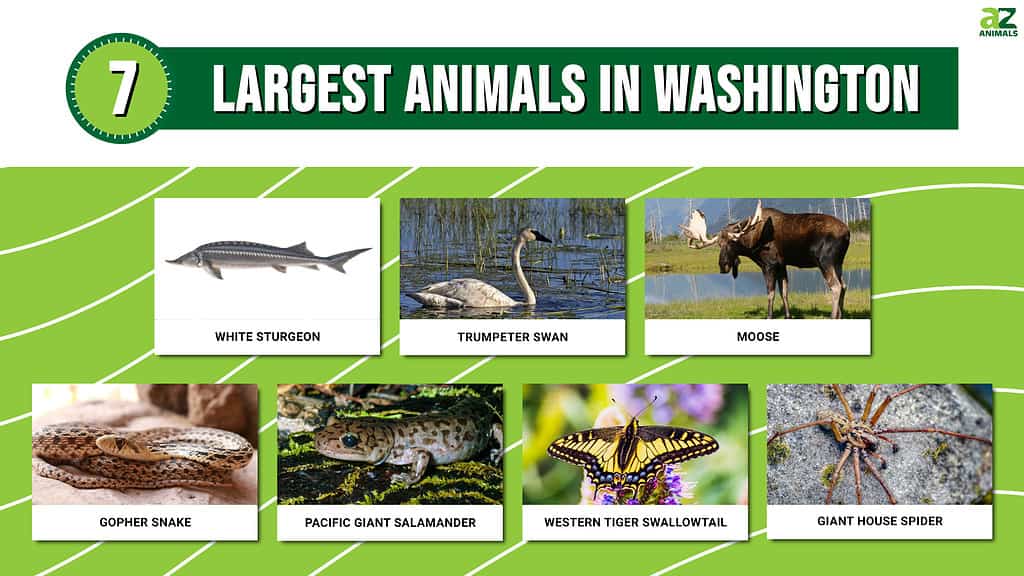
Washington is home to a remarkable number of large animals. You’ll find grizzly bears lurking in the mountains as well as massive fish off the coasts. However, we’re going to explore several different types of large animals within the state, focusing on one fish, bird, mammal, and others.
Having established those rules, let’s endeavor to identify some very large and unique animals that prowl the state.
1. White Sturgeon
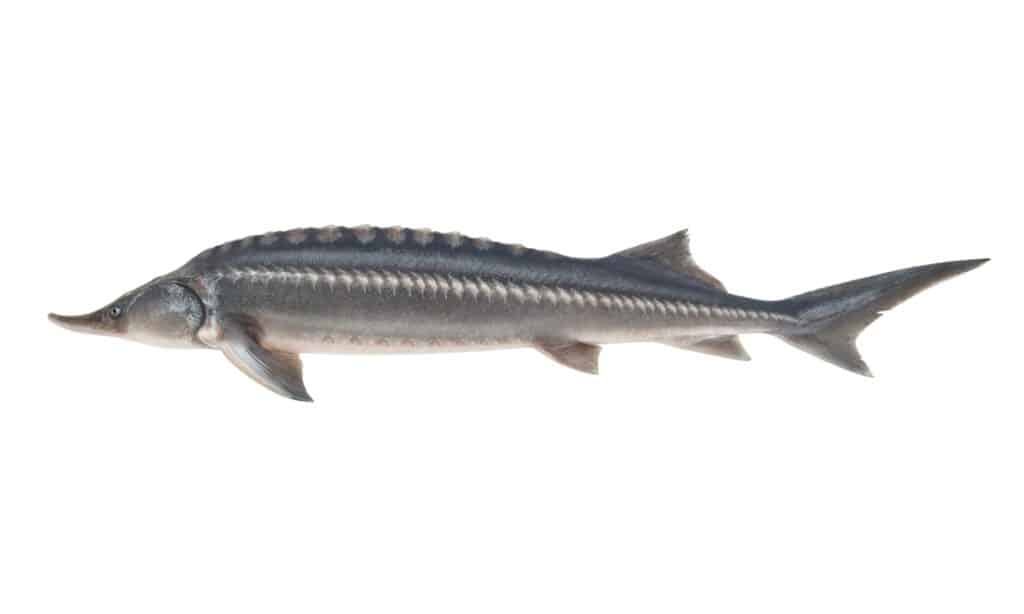
The white sturgeon can weigh up to 20 feet.
©iStock.com/akinshin
| Scientific Name | Size | Location |
|---|---|---|
| Acipenser transmontanus | 5-7 feet, upwards of 20 feet | Found in the Columbia River and its tributaries. |
The white sturgeon is one of the largest freshwater fish in the U.S., if not the largest outright. This massive creature can measure between 5 and 7 feet on average, and it can grow up to 20 feet in length. Furthermore, they can weigh over 1,000 pounds when they are fully grown.
Finding the biggest versions of these fish isn’t always simple, though. They are mostly found in the Columbia River along with its various tributaries and several lakes on the southern end of the state. These fish are not very common, and you probably won’t land a huge one with ease.
2. Trumpeter Swan
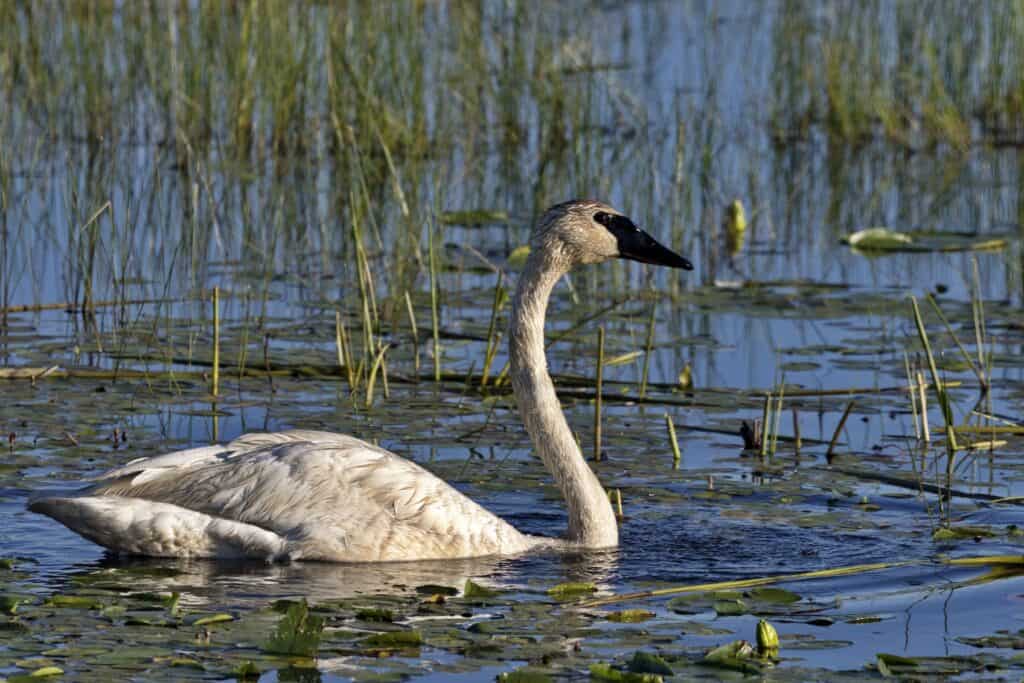
Trumpeter swans have a wingspan of up to 8 feet.
©Florence-Joseph McGinn/Shutterstock.com
| Scientific Name | Size | Location |
|---|---|---|
| Cygnus buccinator | 6-8.2 feet wingspan | Typically located in the Skagit Valley in northwestern Washington. |
The trumpeter swan is the largest native waterfowl in the United States. They may look similar to the tundra swan, but they are larger. They are usually found in the northwestern part of the state such as the Skagit Valley. These large white creatures have a black bill and a black face, and they’re protective of their young. Thus, it’s best to look at them from a distance.
These birds can measure 50 to 60 inches in total body length with a wingspan that exceeds 8 feet. They are massive creatures that primarily subsist on aquatic vegetation.
3. Moose
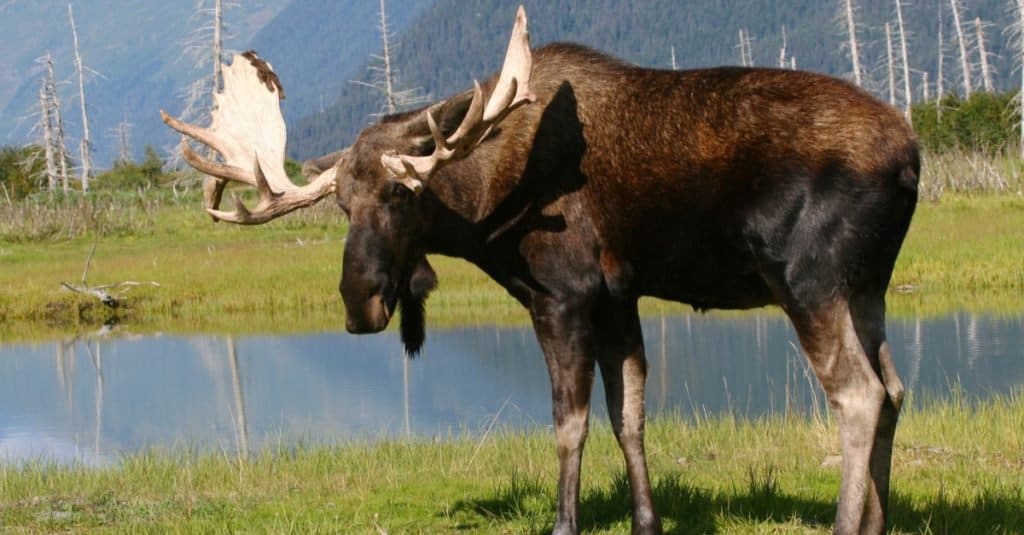
Moose are part of the largest mammals in Washington.
©Steve Bower/Shutterstock.com
| Scientific Name | Size | Location |
|---|---|---|
| Alces alces | 7-10 feet in length | Most often found in the northeastern counties of the state near the Selkirk Mountains. |
Moose are some of the largest animals in Washington along with some of the largest mammals in the United States. They are tall animals with brown fur, large shoulders, antlers, and a patch of skin that hangs below their chin.
You can find these creatures in the Selkirk Mountain area of Washington State. Your best chance of seeing them is in Spokane, Gerry, Stevens, and Pend Oreille counties. You do not want to get close to moose, though. They can charge and trample humans if they decide that you’re a threat.
4. Gopher Snake
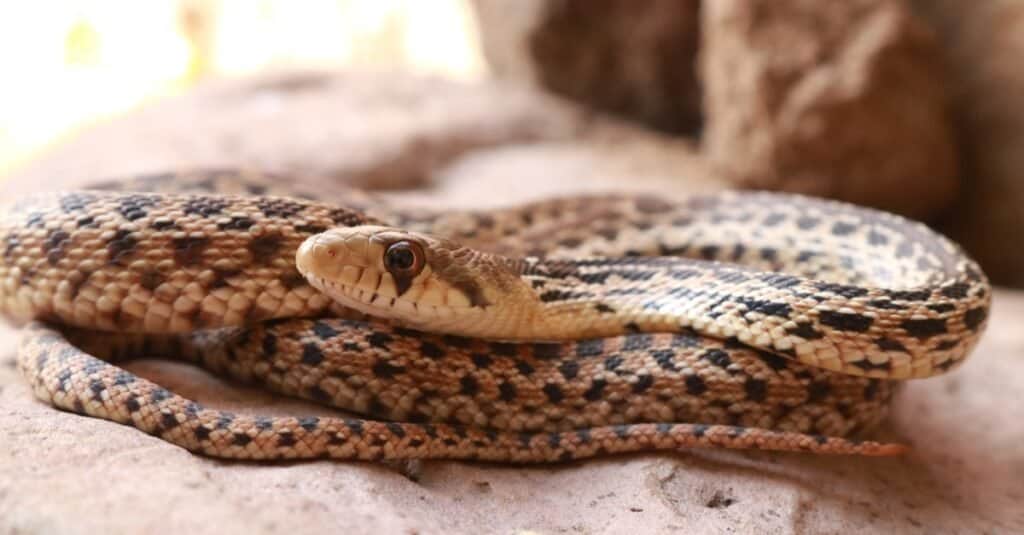
The gopher snake is commonly misidentified as a rattlesnake because of its markings and defensive behavior.
©Creeping Things/Shutterstock.com
| Scientific Name | Size | Location |
|---|---|---|
| Pituophis catenifer | 4-6 feet typically, but can measure up to 8 or higher | Often located in the Columbia Basin in Washington near the Cascade Mountains. |
Some people mistake the gopher snake for a rattlesnake at first glance, but they don’t have a rattle or the same color banding on their tails. Furthermore, they don’t have large heads like many rattlers in the region.
Nevertheless, you should leave probably leave these snakes alone just in case even though they’re not venomous. After all, they do have a habit of vibrating their tails that will make you second-guess what they are. You’ll find these snakes in many places throughout the state. However, they’re often near the Columbia Basin.
5. Pacific Giant Salamander
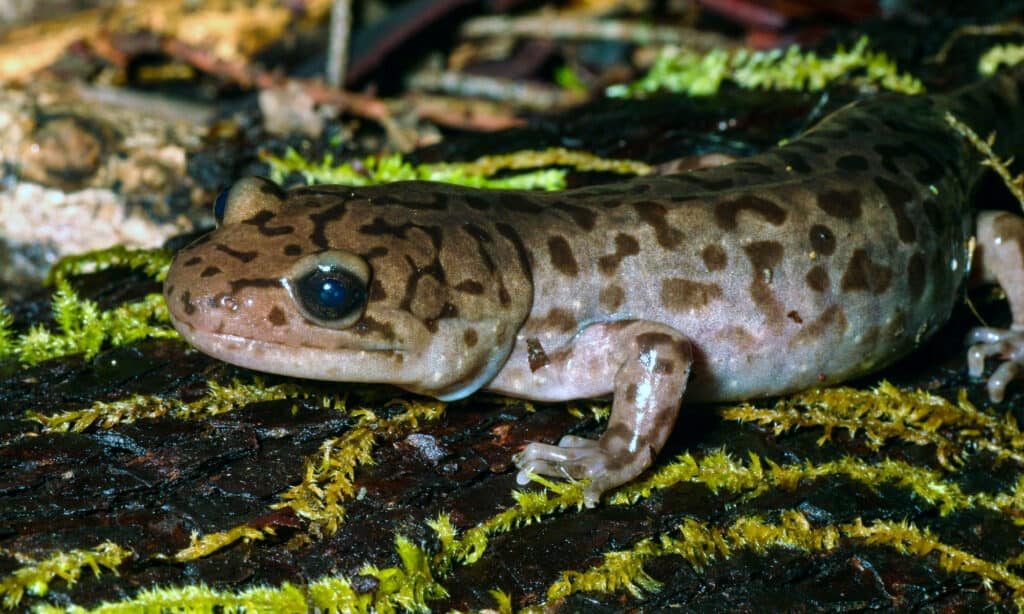
Pacific giant salamander can grow up to 13 inches.
©Michael Benard/Shutterstock.com
| Scientific Name | Size | Location |
|---|---|---|
| Dicamptodon tenebrosus | 10-13 inches | Found near mountainous areas by lakes and streams, often hiding under logs and rocks. |
The Pacific giant salamander is one of the largest animals in Washington that belongs to the amphibian family. They are certainly the largest terrestrial salamander if you consider the fact that hellbenders are aquatic.
The Pacific giant salamander can grow up to 13 inches long when you count their tail, but they have a body length that averages about 7 inches.
You’ll often find these creatures by mountain streams and lakes, but they hide under rocks and logs when they can. They’re often described as being brown with marbled gold patterns, making them rather cool-looking.
6. Western Tiger Swallowtail
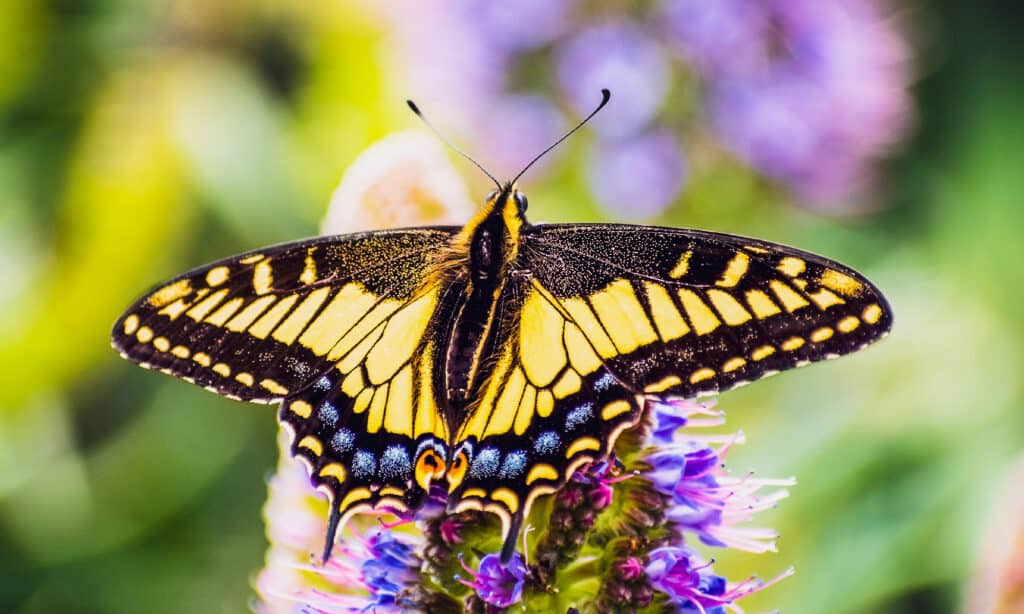
Western
tiger
swallowtail has a wingspan of up to 4 inches.
©iStock.com/Sundry Photography
| Scientific Name | Size | Location |
|---|---|---|
| Papilio rutulus | 3-4 inches wingspan | Found in various woodlands, streams, and even around home gardens. |
Although Washington had sightings of an atlas moth in the region in 2022, they don’t have a large or stable population in the state. That means the largest insect by length alone is the western tiger swallowtail.
This creature is known for having a black and yellow body, with mostly yellow forewings and hindwings. They have vertical black patterns on their wings and black outlines with small yellow patterns around the bottoms of all four wings. You can find them throughout the state around homes and gardens, in wooded areas, and near small streams.
7. Giant House Spider
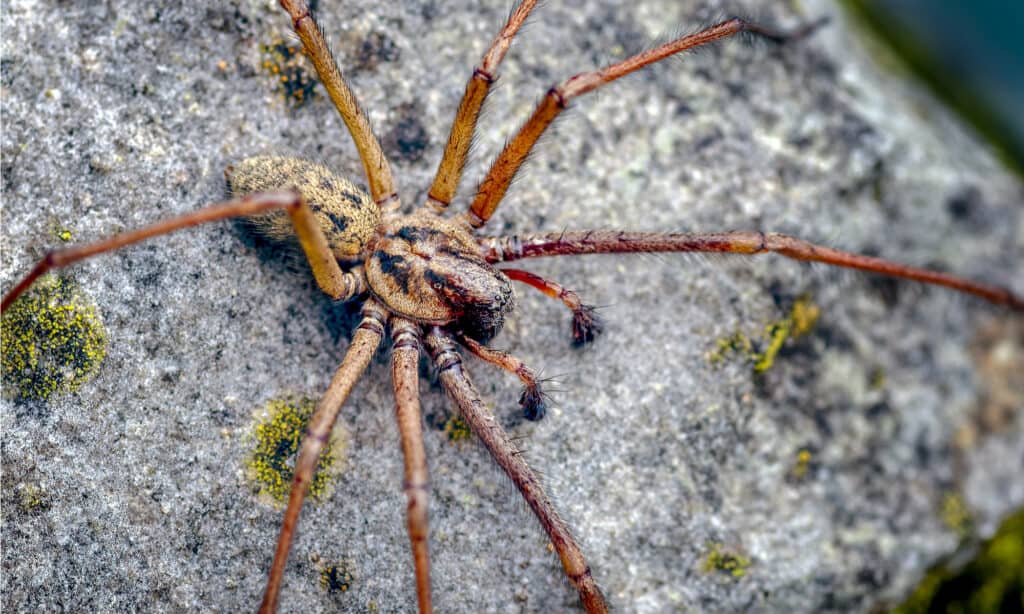
The giant house spider is the largest spider in Washington.
©R K Hill/Shutterstock.com
| Scientific Name | Size | Location |
|---|---|---|
| Eratigena atrica | 2-4 inches legspan | Found in attics, basements, garages, and more throughout the state. |
The giant house spider is the largest spider in Washington. Unfortunately, they have an annoying habit of taking up residence in homes. You’ll encounter them in the dark, unused places of your home like the basement or the garage. These spiders are fast and have black and brown coloring.
They have a legspan that can measure upwards of 4 inches, making most people think they have a wolf spider in their home. They aren’t exceptionally dangerous to humans, though. A bite will only cause minor pain and irritation.
Alright, that’s our list of the largest animals in Washington. Now you know what big animals are lurking around in the great outdoors and how you can find them. Realize that any time you go out into the wilderness, you need to know what’s out there so you can be prepared. That’s the only way to foster a safe relationship between you and wild creatures, and it should be one of admiration and avoidance.
Summary of the 7 Largest Animals in Washington
| Name of Animal | Size | Habitat |
|---|---|---|
| White Sturgeon | 5-20 feet long; 1,000 lbs. | Streams, rivers, estuaries, and marine waters. |
| Trumpeter Swan | 50-60 inches in length; 6-8.2 feet in wingspan. | Wetlands. |
| Moose | 6’11” at shoulders; 1,500 lbs. | Mixed conifer and hardwood forests, brush, beaver flows and other wetland areas. |
| Gopher Snake | 4-8 feet long | Prairies, conifer forests, and deserts. |
| Pacific Giant Salamander | 7″ long body; 10-13″ with tail | By mountain lakes and streams, often under logs and rocks. |
| Western Tiger Swallowtail Butterfly | 3-4″ wingspan | Woodlands, streams, and gardens. |
| Giant House Spider | 2-4″ legspan | Attics, basements, garages, etc. |
The photo featured at the top of this post is © iStock.com/RichardSeeley
Sources
- Washington Department of Fish and Wildlife, Available here: https://wdfw.wa.gov/species-habitats/species/acipenser-transmontanus
- Washington Department of Fish and Wildlife (1970) wdfw.wa.gov/species-habitats/species/cygnus-buccinator#desc-range
- Washington Department of Fish and Wildlife (1970) wdfw.wa.gov/species-habitats/species/alces-alces
- Washington Department of Fish and Wildlife (1970) wdfw.wa.gov/species-habitats/species/dicamptodon-tenebrosus#desc-range
Thank you for reading! Have some feedback for us? Contact the AZ Animals editorial team.






